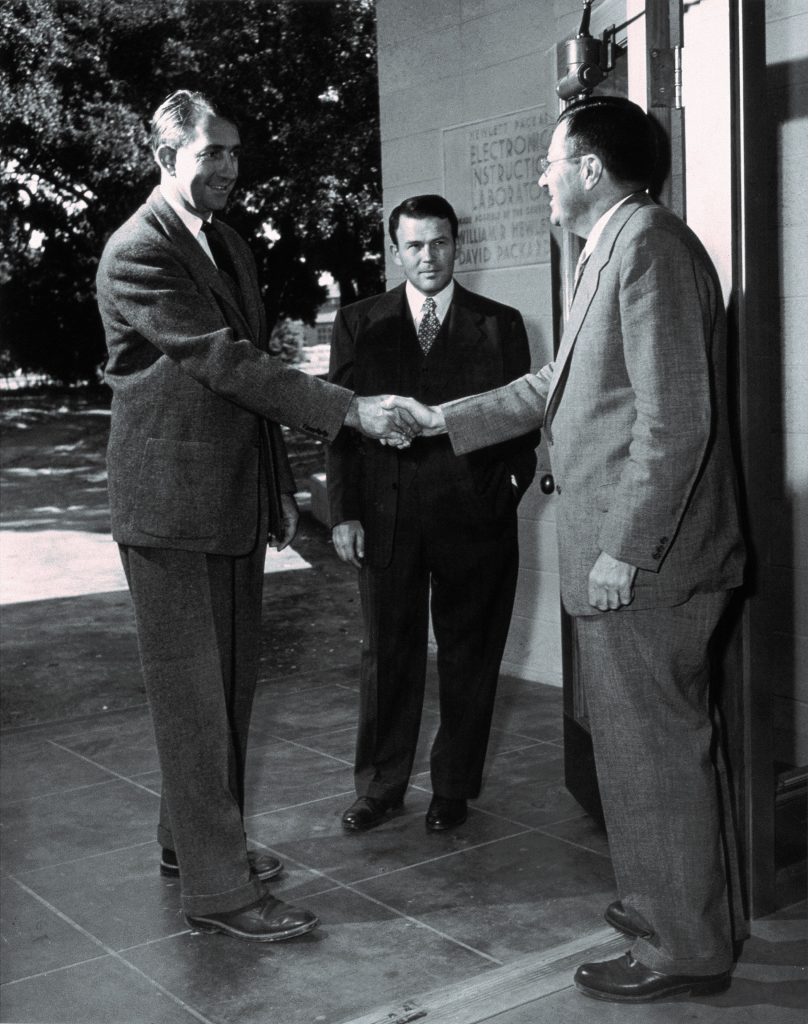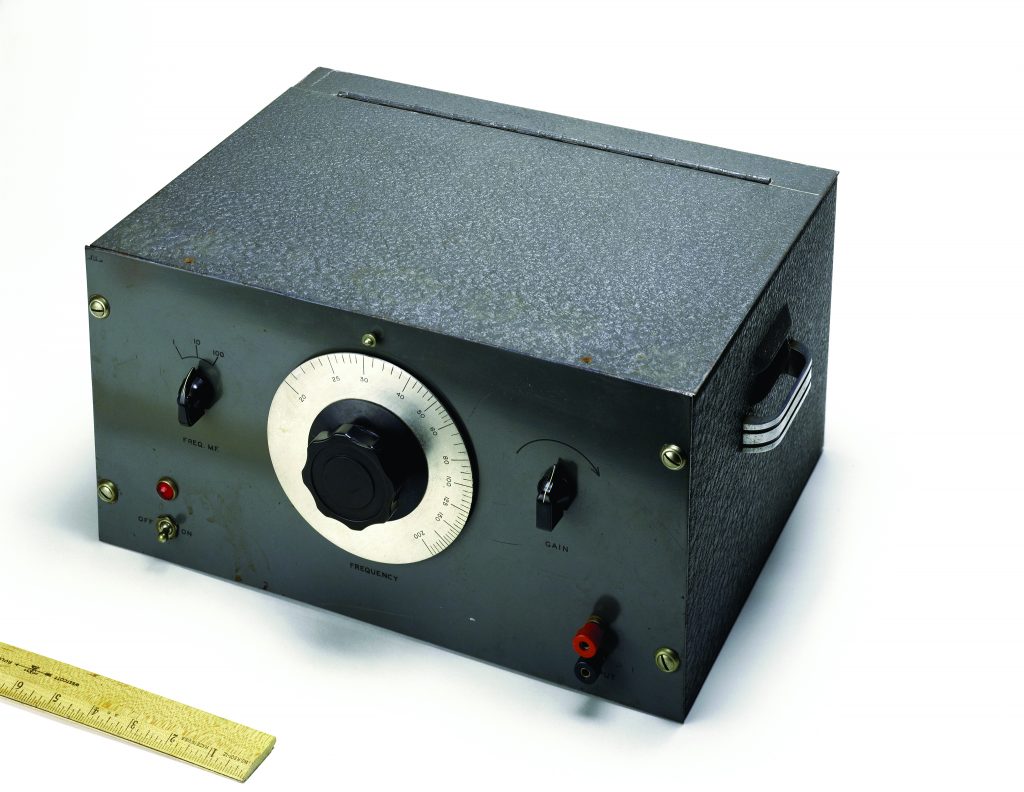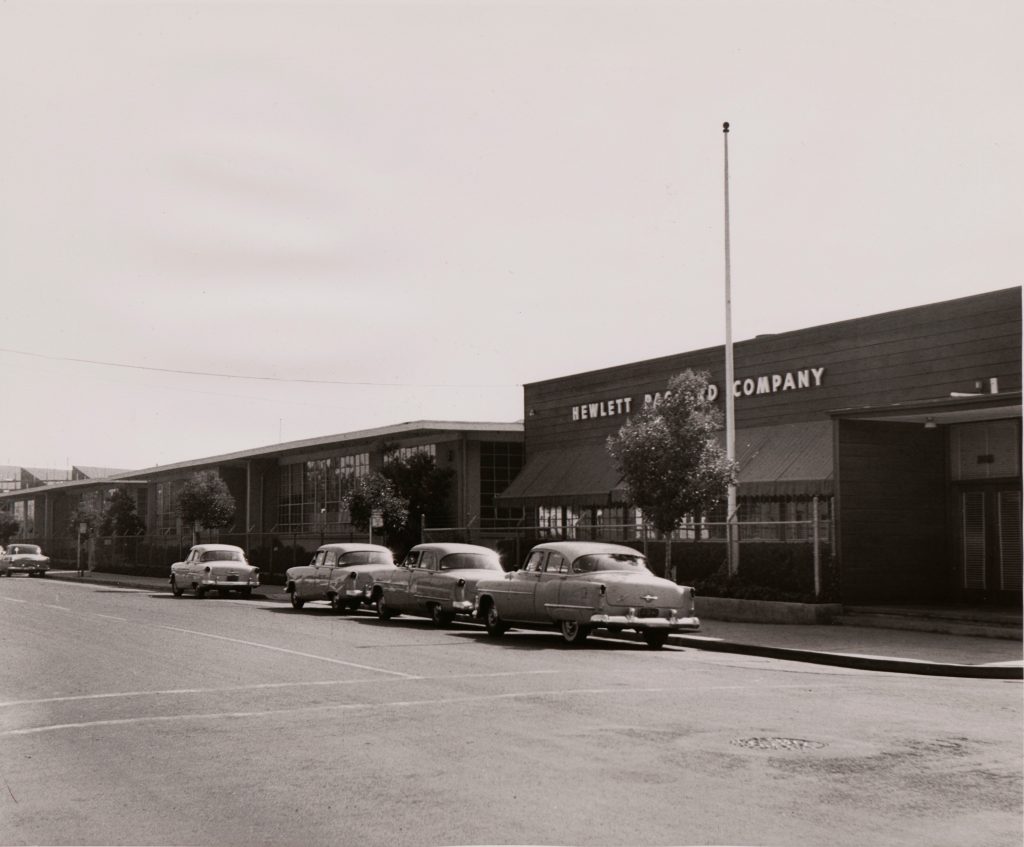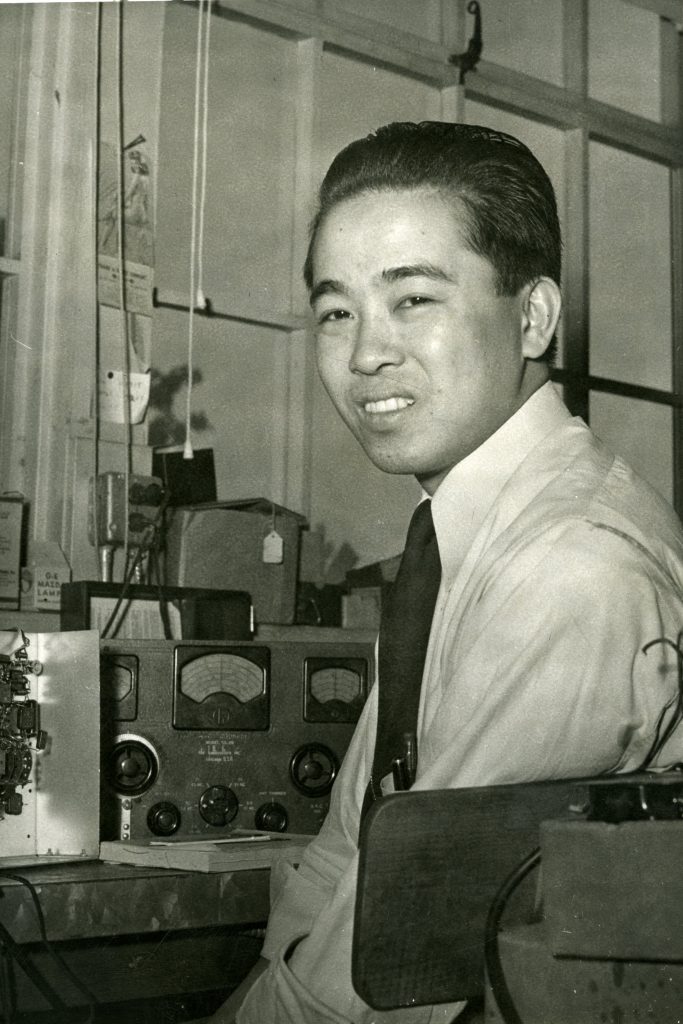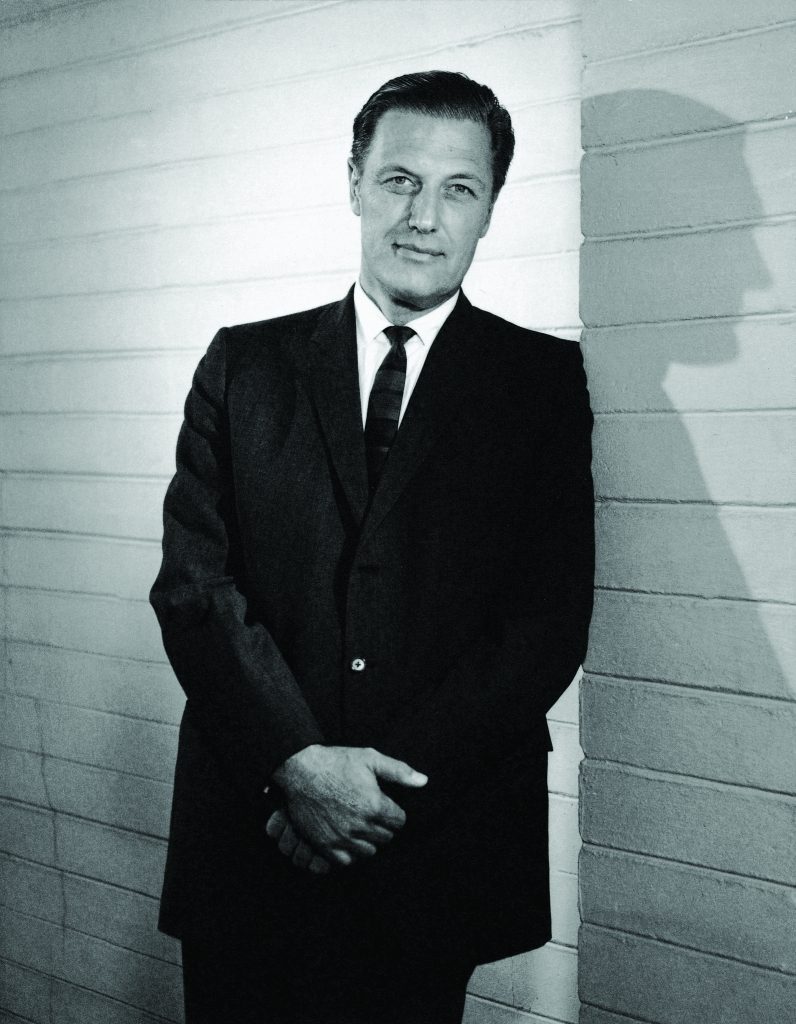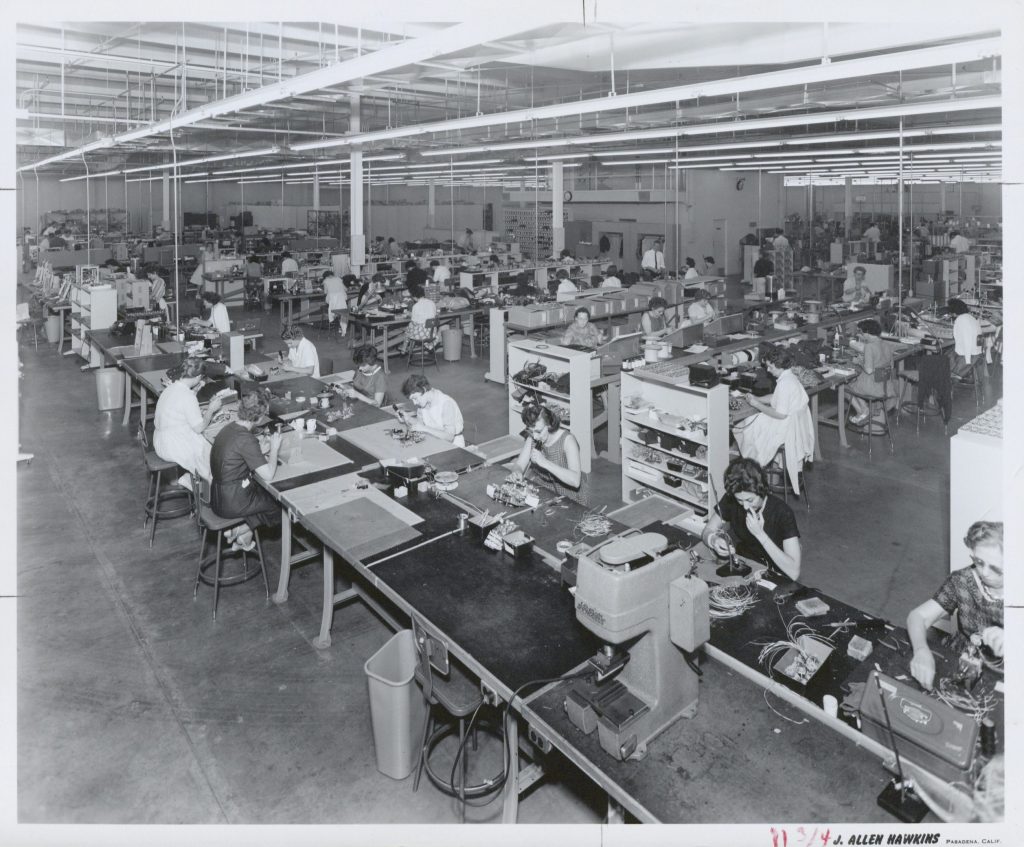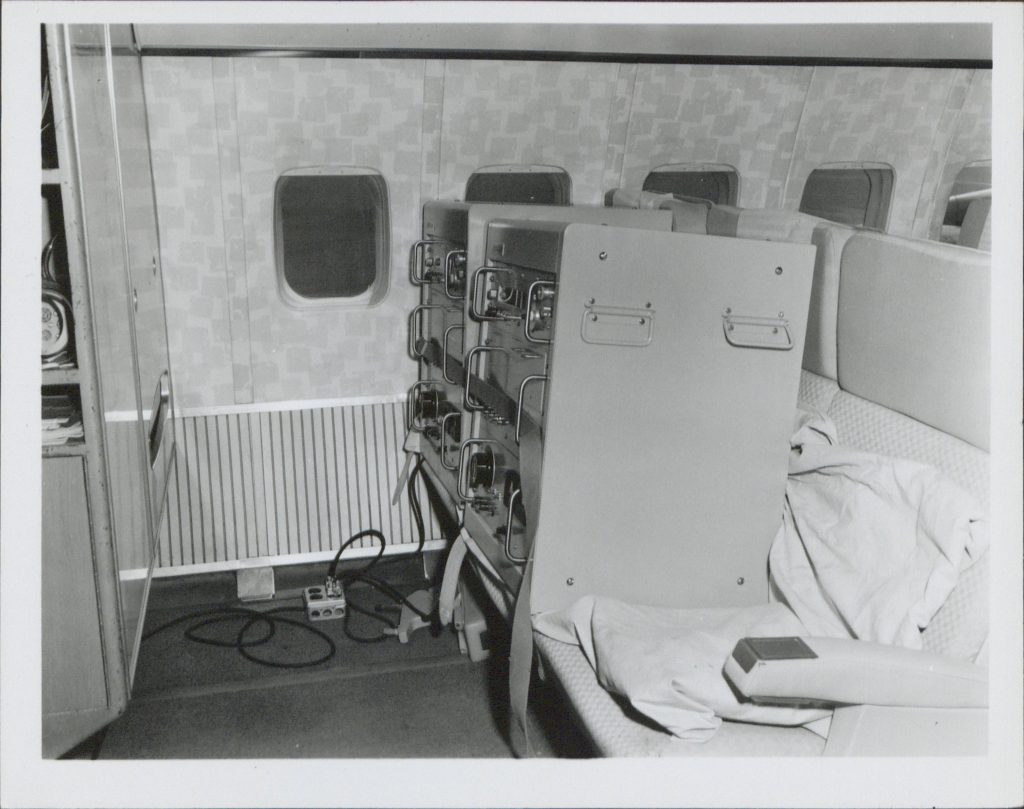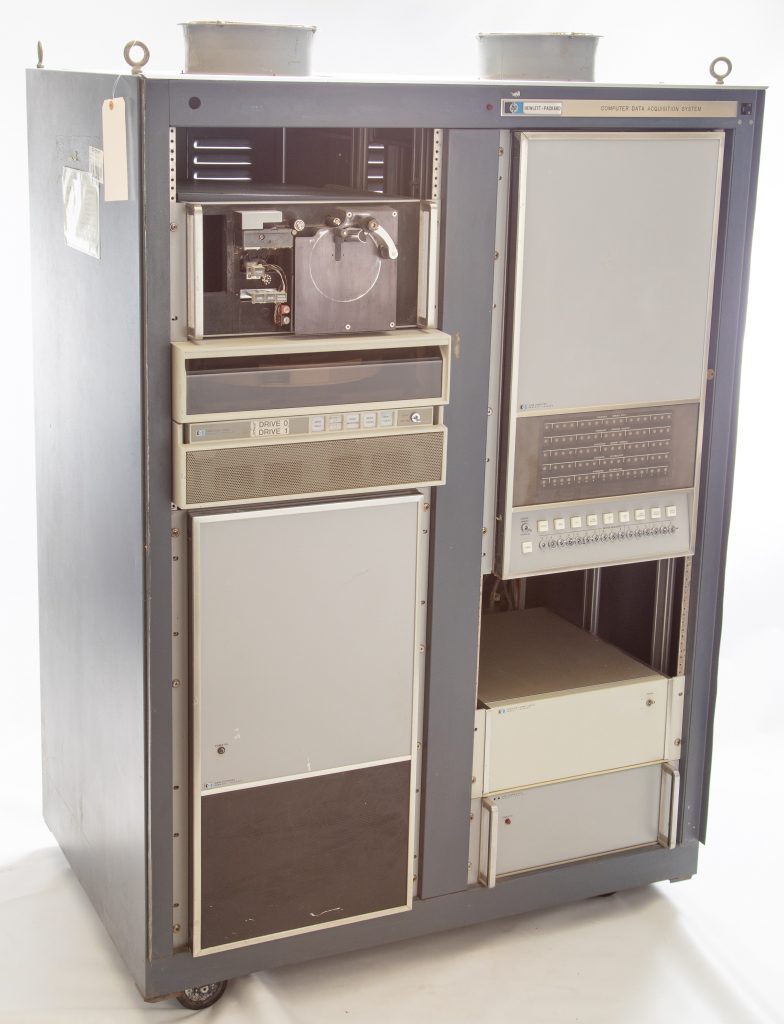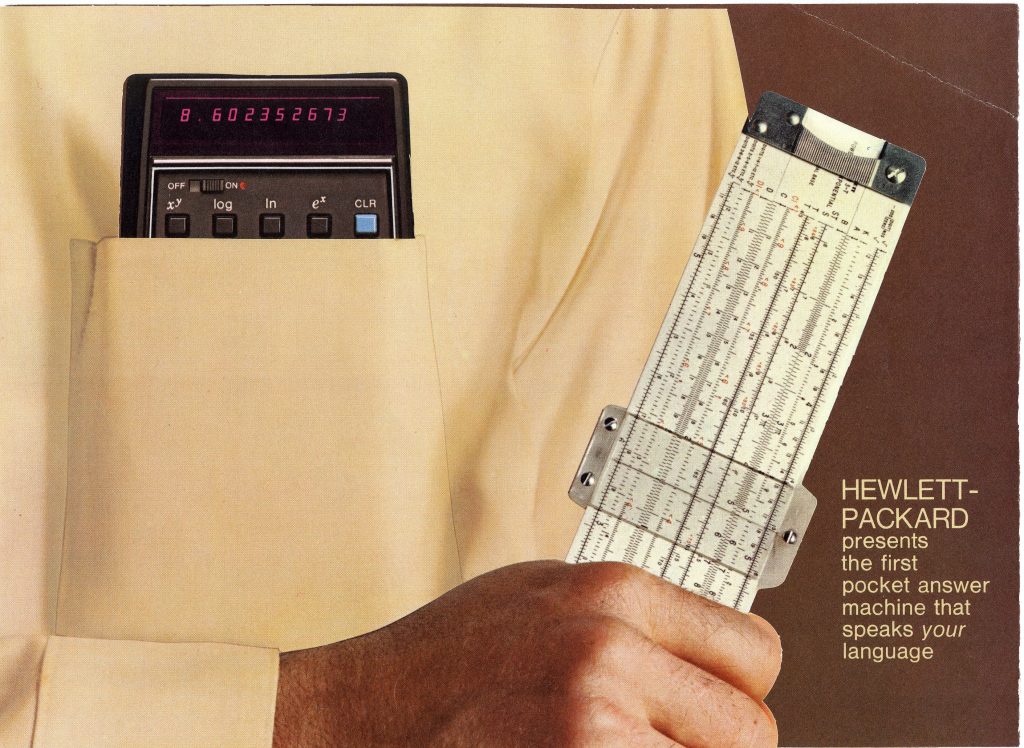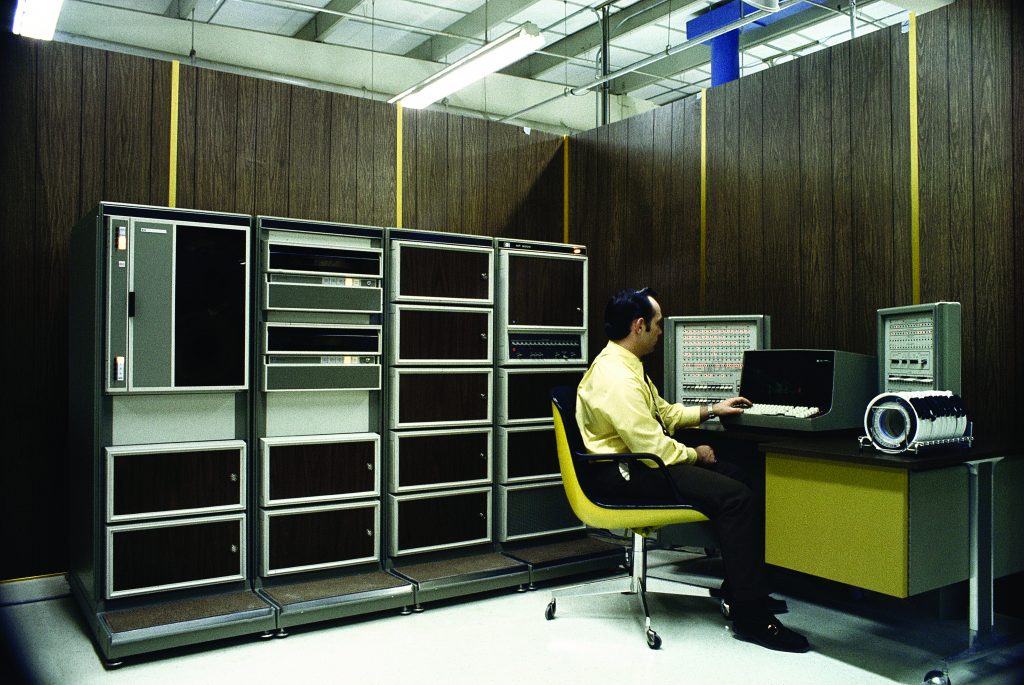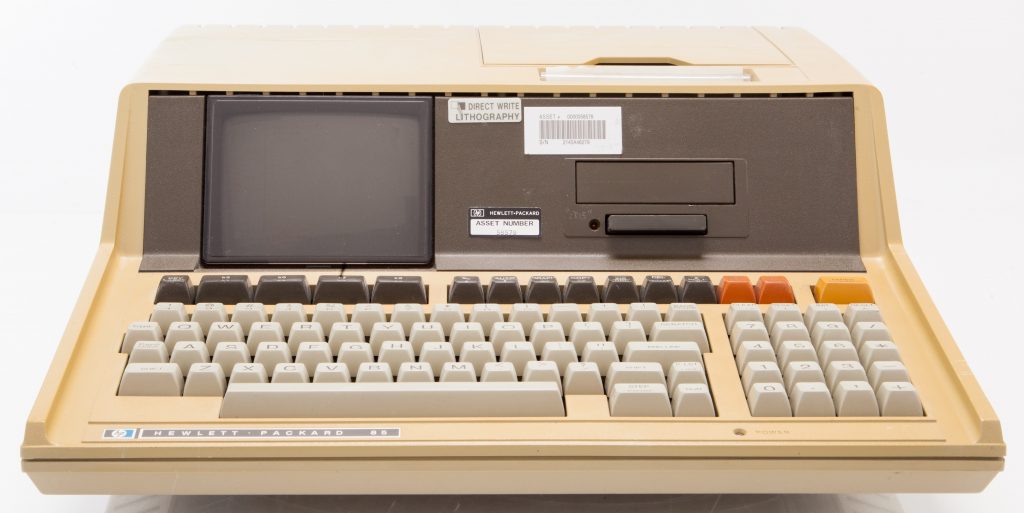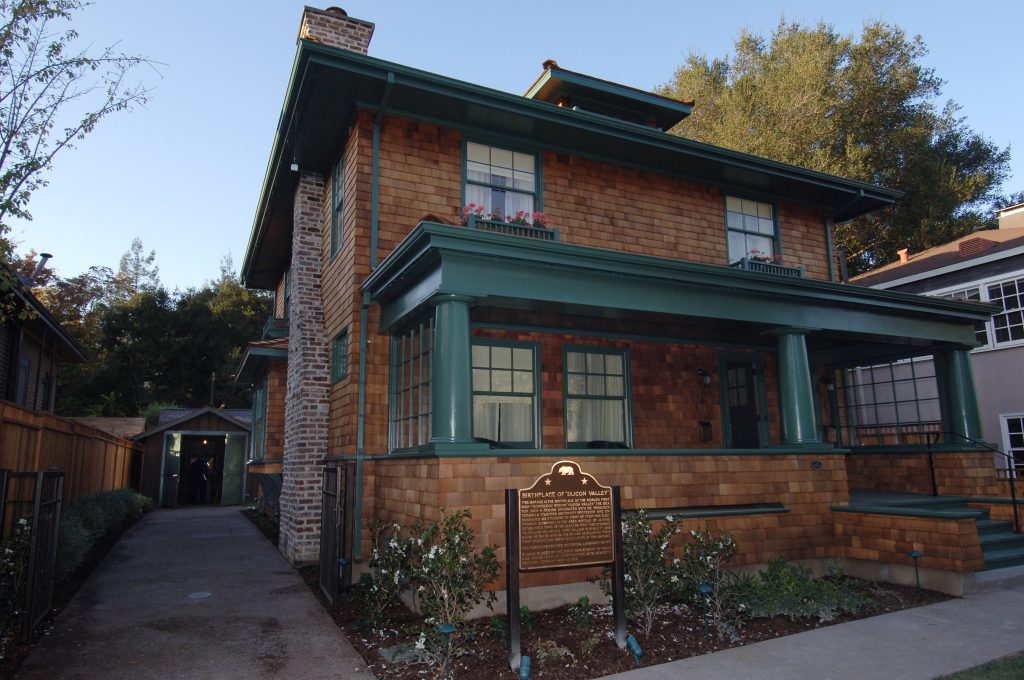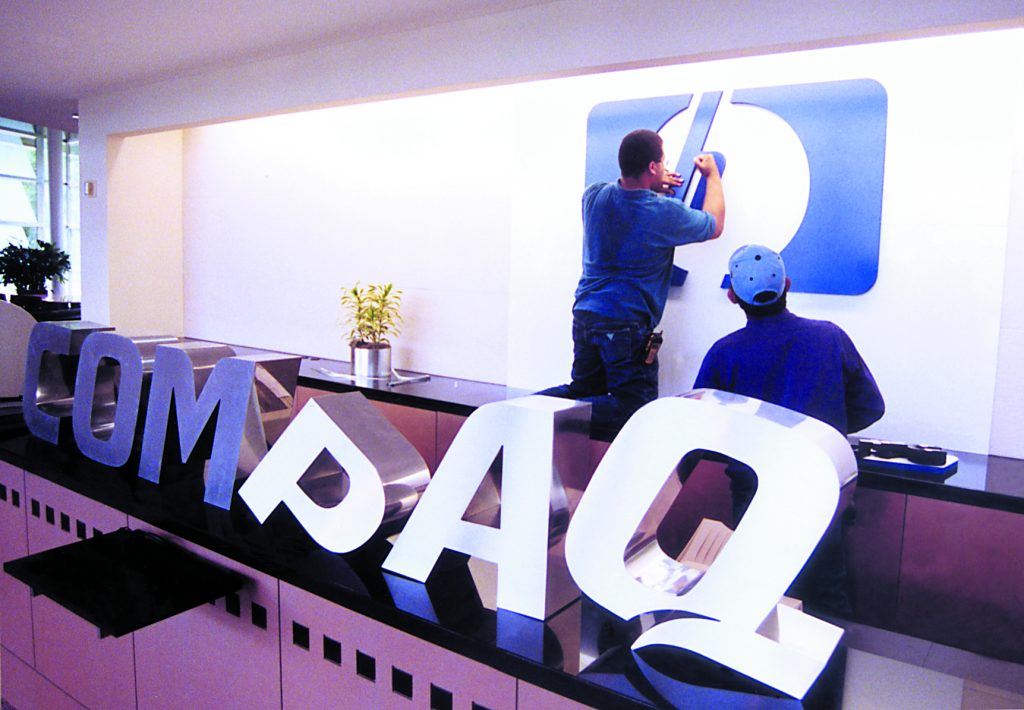Stanford engineering Professor Fred Terman mentored four undergraduates who would become key to Hewlett-Packard, including Bill Hewlett and Dave Packard. After Bill and Dave graduated, Terman also helped the young men get their business started. He would later serve as a director of Hewlett-Packard Company and would become widely regarded as “the Father of Silicon Valley.”
Bill and Dave held their first official business meeting, at which they agreed to establish a new venture together someday. The two men agreed that their company’s mission would involve designing and manufacturing products in the electrical engineering field.
Bill and Dave began part-time operations out of 367 Addison Avenue in Palo Alto, California. The duo used the property’s 12-by-18-foot detached garage as their first workshop, where early operations included adapting Bill’s oscillator prototype for production as well as freelance work.
Hewlett-Packard Company (HPC) was officially born when Bill and Dave formalized their partnership. They agreed to name the company after themselves, then determined the order of their surnames with a coin toss.
Bill filed a patent application for Hewlett-Packard’s first product, the 200A oscillator. The groundbreaking design established Hewlett-Packard’s reputation for innovative, well-made technology, and its quick success helped Bill and Dave move from the garage on Addison Avenue to a rented commercial space in 1940.
World War II caused Hewlett-Packard to expand dramatically. In addition to increased company revenues, employment rose rapidly, which included many women and retiree workers. Wartime production also garnered Hewlett-Packard a good reputation for providing innovative, timely and quality products.
Hewlett-Packard’s wartime expansion led to the construction of the first company-owned building, at 395 Page Mill Road. It was nicknamed “the Redwood Building.”
Hewlett-Packard hired Art Fong, the first known Asian-American engineer in Silicon Valley history. Even in the segregated world of the late 1940s, HPC was committed to non-discrimination, and the company’s decision would help set a tone for ethnic diversity throughout Silicon Valley.
Hewlett-Packard formally incorporated. Dave served as president and Bill as vice president.
Bill and Dave’s old Stanford classmate Barney Oliver joined the company. Oliver would be the head of research and development for the next thirty years.
Hewlett-Packard codified the HP Way in the company’s first set of corporate objectives at the now famous Sonoma meeting. The objectives would be refined throughout the ensuing years, but their principles would remain intact in emphasizing good citizenship, ethical business practices and respect for the individual alongside provisions designed to foster sound business strategy.
Hewlett-Packard reached an agreement for its first acquisition: F.L. Moseley Company. F.L. Moseley made graphic printing devices and associated equipment, which was a key foray into printer technology for HPC.
Hewlett-Packard moved into its new corporate headquarters at 1501 Page Mill Road in Stanford Industrial Park (later Stanford Research Park). HP Inc. continues to use the park for its own headquarters, while Hewlett Packard Enterprise relocated to San Jose.
Hewlett-Packard introduced the 5060A, the first all solid-state cesium-beam clock. It was a crucial watershed for atomic timekeeping and communications technology that relied on devices being synced across great distances. HPC demonstrated the new device’s accuracy by sending two synchronized 5060As on a 12-day global tour that included multiple stops at time standardization laboratories throughout both Switzerland and the United States.
HP Laboratories officially launched. The new division was created to give engineers the freedom to pursue research and development without the pressure of needing to find an immediate path to monetization for their discoveries, thus allowing them to discover the technologies of the future.
Hewlett-Packard introduced its first computer, the 2116A. It was developed to augment the company’s core business in instruments and testing devices, but wound up marking the beginning of a new business avenue for the company.
One of the most important inventions in Hewlett-Packard’s history, the HP9100A, was introduced to a select audience at the Institute of Electrical and Electronics Engineers show. (It was announced to the general public in the September 1968 issue of the Hewlett-Packard Journal.) The 9100A was the world’s first commercially available programmable desktop calculator and the first scientific calculator.
Hewlett-Packard introduced the HP 35, the first handheld scientific calculator. The ability to execute advanced mathematical functions with a device that could fit in a shirt pocket was so revolutionary it triggered a consumer electronics craze.
Hewlett-Packard shipped its first HP 3000 minicomputer, launching what would become one of the most important and popular products in the company’s history. The 3000 was HP’s first machine designed for commercial data processing.
In a sign of its commitment to the budding PC market, Hewlett-Packard created the Personal Computer Operation, a dedicated development department that operated out of the Corvallis, Oregon, division.
Hewlett-Packard announced its first personal computer, the HP 85. In a far-sighted recognition of the eventual direction of the market, the company designed the 85 to be a portable, self-contained unit – the display, keyboard and printer were all integrated.
Hewlett-Packard introduced the HP 150, a watershed device for personal computing. It was the first HP machine to use a 3.5” floppy disk drive and among the earliest personal computing devices to feature a touchscreen – it tracked the user’s finger on the screen using infrared technology.
Hewlett-Packard introduced the first desktop LaserJet (the 2686A). The printer was capable of offering letter quality printing without the screeching produced by dot matrix or daisy-wheel printers.
The State of California declared the garage at 367 Addison Avenue where Hewlett-Packard was founded a historic landmark and “the birthplace of Silicon Valley.” The site would be entered in the U.S. National Register of Historic Places in 2007.
Hewlett-Packard announced plans to spin off its test and instrument business into a separate company, Agilent Technologies. Agilent’s IPO would be the largest in Silicon Valley history at the time, raising over $2 billion, while Hewlett-Packard was able to focus exclusively on furthering the potential of computers and related devices to improve the way people lived and worked.
Hewlett-Packard announced the acquisition of Compaq for approximately $25 billion. It was one of the largest mergers in tech industry history, and dramatically expanded Hewlett-Packard’s offerings in both personal and enterprise computing.
Hewlett-Packard announced that it would divide into two companies. HP Inc. would focus on personal computing and printing, while Hewlett Packard Enterprise (HPE) would focus on enterprise products. The division would be complete on November 1, 2015.

